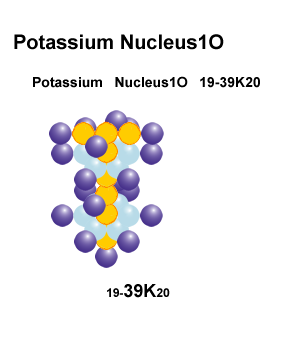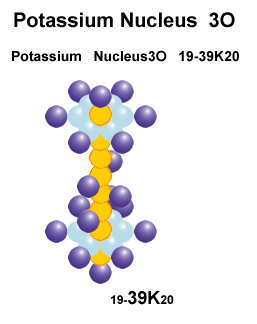Vladi S.
Travkin,

The Annals of Exploratory Science
Vladi S.
Travkin,


 Hierarchical Scaled Physics and Technologies (HSPT), Rheinbach, Germany,
Denver, CO, USA
Hierarchical Scaled Physics and Technologies (HSPT), Rheinbach, Germany,
Denver, CO, USA
ABSTRACT
We consider and describe in this communication the possible transfer of energy via the participating subatomic particles and within the structure dynamics of Isomer's Nucleus Structural Formula Domain (SFD).
What is the Isomer's Nucleus Structural Formula Domain ?
First is - How Conventional Orthodox Homogeneous Nuclear Physics (COHNP) ascribe the isomers?
It is - the two or more nuclei with the same mass number and atomic number that nevertheless, have different radioactive properties and can exist in any of several energy states for a measurable period of time.
We would say using the definitions and knowledge base of SNP (Structural Nuclear Physics) [4-9] that isomers of isotope generally are different in their structural mophology of nucleus.
For example, if we compare a few of potassium's isomers - exibited here for the first time in physics:


Figure 1. Some of Isomers of 19K39 - Potassium
we would expect a difference, and unambiguous differences, between the nuclei and between their stability or/and lifespan.
Now we can answer the question - What is the Structural Formula Domain?
That is an array of isomers of a one isotope of element in which every one separate nucleus has a specific explained morphology based on SN physics definitions and rules.
Then within that SFD the dynamics of isomer can have the special transitions (transfers) - spatial structural transformations (conversions) with the gain or loss of energy during that structural transformation of nucleus.
Many experiments and some technologies (Cold Fusion, Papp engine, Magnet Motors, etc.) support the conclusion that energy comes from nucleus' components (protons and neutrons) during their internal nuclear dynamics, transitions, internal conversions, and decay).
That energy dynamics can be reciprocal and cyclic, like in the Papp engine cylinders.
1. "PowerPedia:Joseph Papp's Noble Gas Engine," http://peswiki.com/index.php/PowerPedia:Joseph_Papp%27s_Noble_Gas_Engine; retrieved 06/05/2014
2. "Joseph Papp's Noble Gas Engine," http://pesn.com/Radio/Free_Energy_Now/shows/2006/11/25/9700216_Papp_Engine/; retrieved 06/05/2014
3. Mallove, E.F., "The Mystery and Legacy of Joseph Papp's Noble Gas Engine," Infinite Energy, issue #51, pp. 6-13, (2003)
4. Kanarev, Ph.M., Nuclei of Atoms, http://www.micro-world.su/ Folder "Books"; retrieved 05/05/2013
5. Kanarev, Ph.M., Answers to Microworld Questions, http://www.micro-world.su/ Folder "Answers"; retrieved 05/05/2013
6. Travkin, V.S., Electrodynamics 2 - Elements 3P (Polyphase-Polyscale-Polyphysics), http://travkin-hspt.com/eldyn2/index.htm, (2013)
7. Travkin, V.S. and Bolotina, N.N., "The Classical and Sub-Atomic Physics are the Same Physics," http://travkin-hspt.com/parphys/pdf/51_PrAtEd-QM-Ref-2HSPT.pdf, (2013)
8. Travkin, V.S. and Bolotina, N.N., "Hydrogen in HSP-VAT. Introduction," http://travkin-hspt.com/parphys2/abstracts/hydrogen-ab.htm, (2013)
9. Travkin, V.S. and Bolotina, N.N., "Iron. Introduction," http://travkin-hspt.com/parphys2/abstracts/iron-ab.htm, (2013)
The following material will describe and explain in more or less simple text the scaled subjects regarding some features of sub-atomic transport of energy:
Any information displayed here is the propriatary information in the area of "Transfer of Energy Up and Down within the Isomer's Nucleus Structural Formula Domain."
This is also the well known problem - still can not be solved within the Homogeneous One-Scale nuclear physics, electromagnetism, particle physics.
![]()

![]()